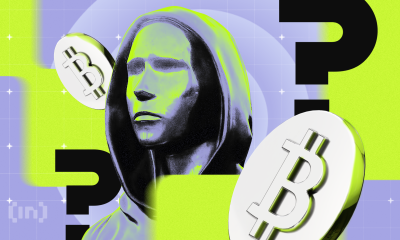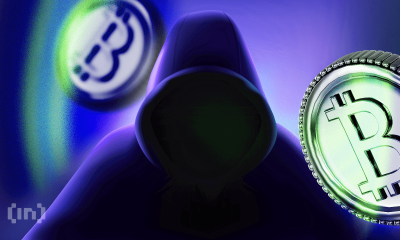Market
London’s Satoshi Nakamoto Press Conference Derails Fast

At a London press conference on October 31, an individual named Stephen Mollah claimed to be Satoshi Nakamoto, the anonymous creator of Bitcoin. However, his lack of credible evidence frustrated the attendees.
Held at the Frontline Club, the event quickly lost credibility as technical mishaps and unsupported statements left attendees questioning Mollah’s authenticity. PR London Live announced the conference in a press release yesterday.
A Long List of Failed Satoshi Nakamoto Claims
Among the few attendees was Joe Tidy, BBC News’ cyber correspondent, who reported the bizarre events of the conference. Admission reportedly cost $540, and the event’s structure unraveled when Mollah was unable to use his laptop due to technical issues.
Read More: Who Is Satoshi Nakamoto?
In addition to being Satoshi Nakamoto, Mollah described himself as an “economic and monetary scientist.” He referenced attempts to reveal his identity in 2016, citing an unpublished interview with BBC’s Rory Cellan-Jones.
Attendees pressed for proof, but Mollah only provided a handful of evidently fake screenshots. When asked if he would transfer Bitcoin from the Genesis block or present cryptographic verification of being Satoshi Nakamoto, Mollah promised to do so in the next few months.

“Journalists (including myself) have interrupted Mr Mollah’s long backstory and asked for him to show the promised evidence. Been here nearly an hour and people are restless and increasingly rude. Mr Mollah’s cheek is twitching rapidly as he stares down a sceptical crowd,” Joe Tidy wrote in an X (formerly Twitter) post.
He also made unsubstantiated claims about developing energy recovery technology for cars and creating the television show Britain’s Got Talent.
During the event, a Frontline Club representative clarified that the venue had no affiliation with the proceedings, leading at least one reporter to walk out.
Satoshi Remains Illusive
Various people have previously claimed to be Satoshi Nakamoto without verifiable proof. Craig Wright, an Australian scientist, recently lost a UK lawsuit against The Crypto Open Patent Alliance (COPA) over his own claim.
After a month-long trial, a UK court found Wright’s evidence insufficient and ruled he was not the author of the Bitcoin whitepaper.
Wright now faces a Worldwide Freezing Order (WFO) from the UK High Court, preventing him from moving assets until he pays £1.548 million ($1.9 million) in legal fees to crypto podcast host Peter McCormack.
Read More: What Is a Satoshi? Everything About Bitcoin’s Smallest Unit
Amid these events, HBO Max released a documentary suggesting that Peter Todd, a Canadian cryptographer involved in Bitcoin’s early days, could be Satoshi Nakamoto.
Todd, however, denied the allegations, expressing that the attention has disrupted his life and compromised his safety. Since the documentary aired, he has received numerous messages seeking financial help and has reportedly gone into hiding.
Disclaimer
In adherence to the Trust Project guidelines, BeInCrypto is committed to unbiased, transparent reporting. This news article aims to provide accurate, timely information. However, readers are advised to verify facts independently and consult with a professional before making any decisions based on this content. Please note that our Terms and Conditions, Privacy Policy, and Disclaimers have been updated.
Market
Exploring Hottest New Coins: FINE, CHILLGUY, and CHILLFAM

New coins such as FINE, launched three days ago, have seen their market cap reach $2.5 million. CHILLGUY, driven by TikTok hype, has amassed 120,000 holders and achieved $129 million in daily trading volume.
CHILLFAM, following in CHILLGUY’s footsteps, has quickly reached a $10 million market cap with a 300% price surge, showing the potential for continued interest in these emerging tokens.
This Is Fine (FINE)
FINE, launched on Pumpfun just three days ago and now graduated into Raydium, is attempting to capitalize on the growing trend of coins paired with animated video.
As of this writing, the coin boasts over 26,000 holders and a market cap of $2.5 million. However, it has experienced a steep decline, dropping more than 50%. If FINE can stabilize after this sharp drop, it may present an attractive entry point for traders eyeing a potential recovery.

FINE’s RSI is 35, indicating that it is approaching the oversold zone. This suggests that selling pressure may be reaching an extreme, potentially setting the stage for a reversal or bounce if buying interest returns. However, the current bearish momentum highlights the need for caution before expecting a recovery.
Just a chill guy (CHILLGUY)
CHILLGUY, a Solana-based meme coin that gained popularity through TikTok, has quickly risen to prominence in less than a week. The coin’s rapid adoption is evident in its impressive metrics, boasting over 120,000 holders and amassing 112,000 transactions per day.
The coin’s daily trading volume has surpassed $129 million, showcasing substantial market activity and strong interest from traders. This level of engagement highlights CHILLGUY’s potential to sustain its momentum if the hype continues to drive liquidity and participation.
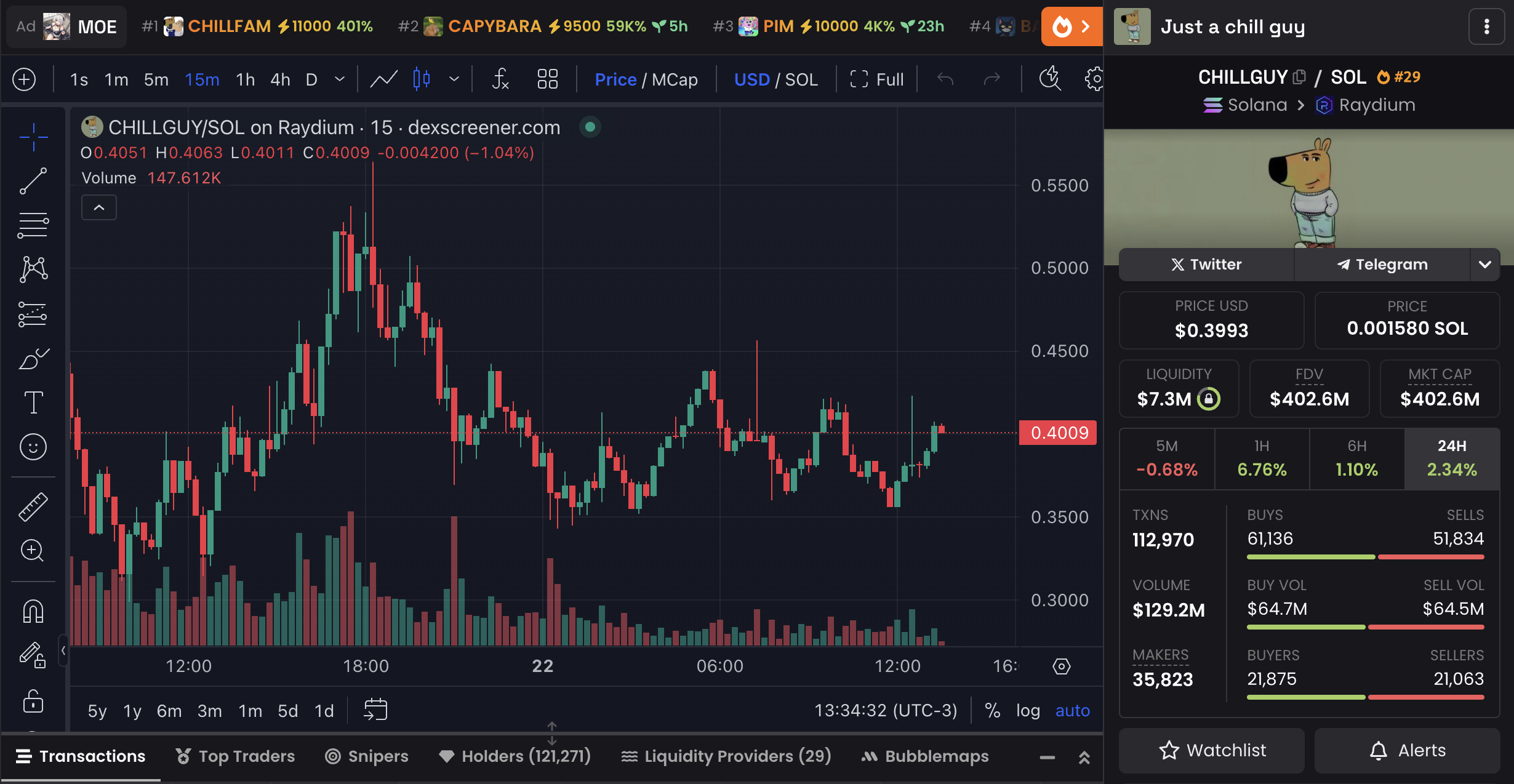
CHILLGUY’s RSI sits at 52.3, indicating a neutral zone where neither buyers nor sellers have a dominant edge. This balanced sentiment suggests the market is stabilizing after initial volatility, leaving room for the token to move in either direction depending on future market activity and demand.
Chill Family (CHILLFAM)
CHILLFAM, inspired by the success of CHILLGUY, was launched just two days ago. With nearly 58,000 holders and a daily trading volume of $55 million, the token is gaining traction among meme coins enthusiasts on Solana.
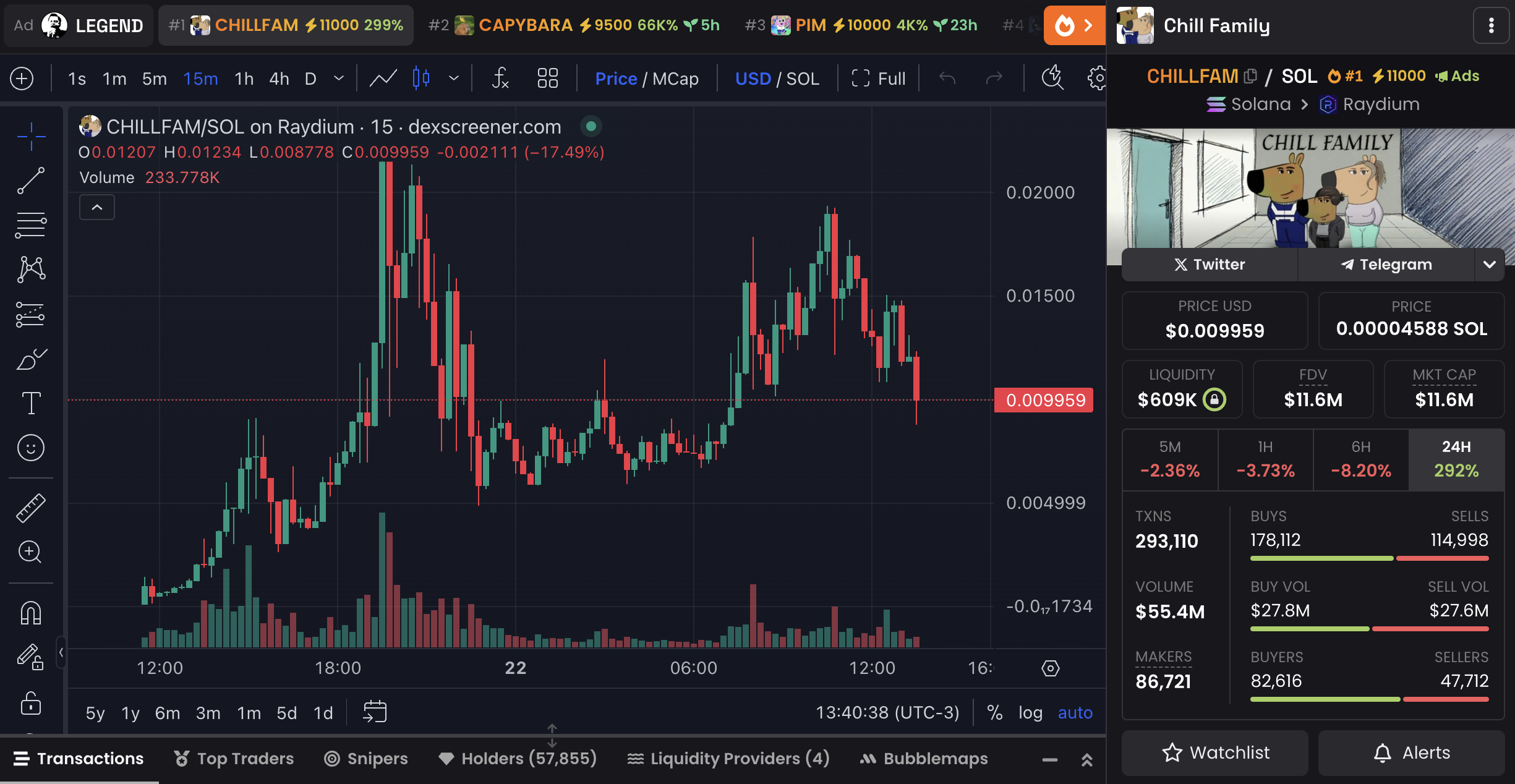
Currently boasting a $10 million market cap, CHILLFAM has surged almost 300% in 24 hours, highlighting strong early interest. If it can maintain this momentum and sustain its $10 million market cap, the coin could potentially aim for $15 million or even $20 million.
CHILLFAM’s RSI is at 43, suggesting that the token is in a slightly bearish to neutral zone. This level indicates that the recent rally may be cooling off, providing a period of consolidation. If buying interest returns, it could reignite bullish momentum and push CHILLFAM toward higher valuations.
Disclaimer
In line with the Trust Project guidelines, this price analysis article is for informational purposes only and should not be considered financial or investment advice. BeInCrypto is committed to accurate, unbiased reporting, but market conditions are subject to change without notice. Always conduct your own research and consult with a professional before making any financial decisions. Please note that our Terms and Conditions, Privacy Policy, and Disclaimers have been updated.
Market
XRP To Hit $40 In 3 Months But On This Condition – Analyst
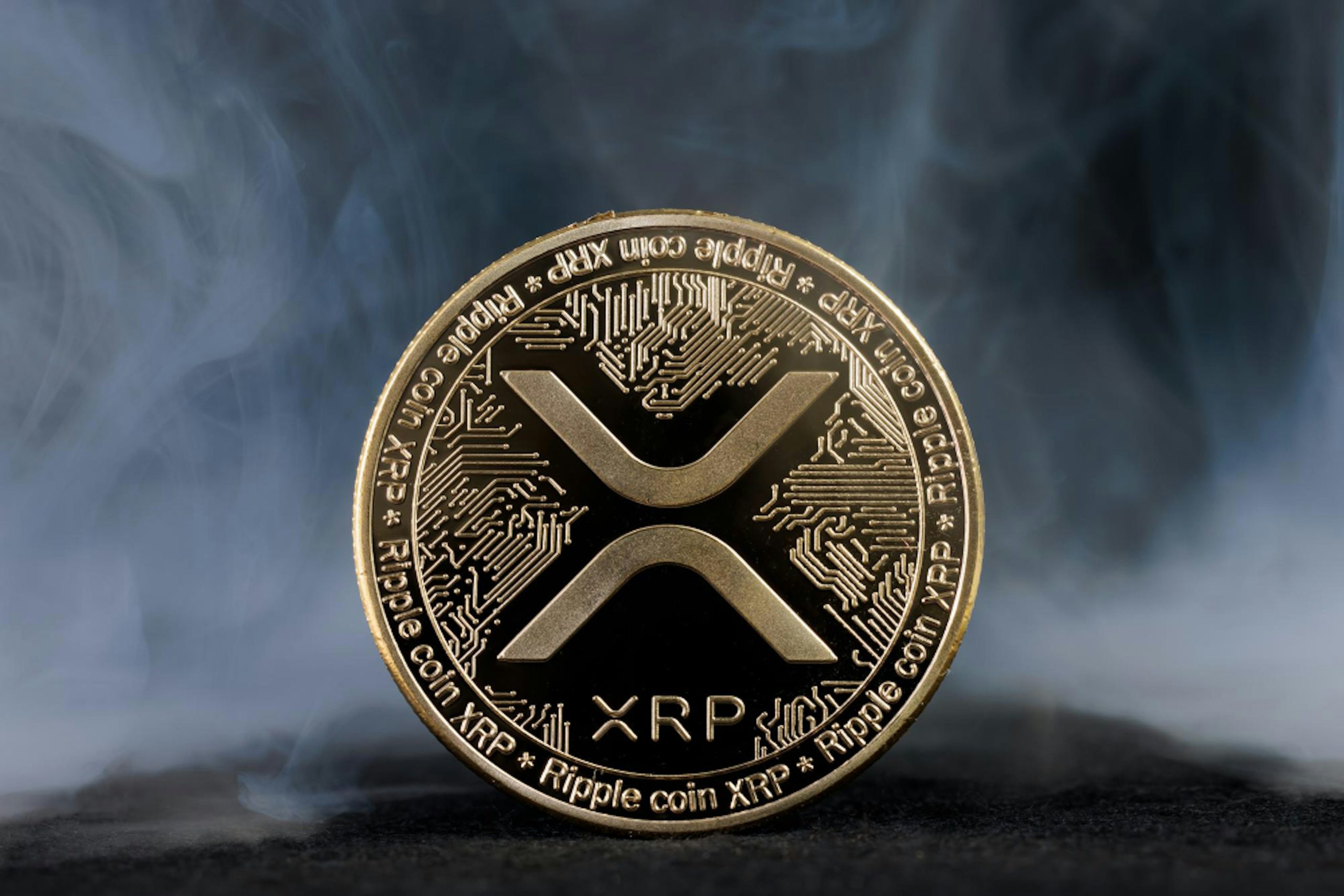
XRP remains one of the crypto market’s current trailblazers rising by 23.21% in the past 24 hours. Over the last two weeks, the prominent altcoin has recorded a 154% price gain establishing itself as the sixth-largest cryptocurrency with a market cap of $89.82 billion. With this current momentum and the crypto bull season still in its early stages, analysts remain highly bullish on XRP’s potential to reach lofty price levels.
Can XRP Repeat 2017 Historical Price Movement?
In an X post on November 22, an analyst with the username CryptoBull stated that XRP could trade at $40 over the next three months if the token mirrors its first prominent price surge from 2017.
Data from CoinMarketCap shows that XRP rose $0.006 to a market peak of $0.33 in early 2017, representing a 5,400% gain. Considering its recent price rally, the altcoin may be gathering momentum to reproduce such price movement in a highly anticipated crypto bull run, especially considering recent happenings.
Most notably, popular anti-crypto Securities and Exchange Commission Chairman Gary Gensler recently announced his intentions to resign on January 20, a move largely behind the current bullish sentiment among XRP investors considering the Commission’s long-lasting regulatory battle with Ripple. In fact, Gensler’s decision to leave the SEC has been described as the “best thing” for Ripple, which holds significant weight for XRP’s future.
Gensler’s resignation coincides with the inauguration of pro-crypto incoming US President-Elect Donald Trump who has promised to introduce a more friendly approach to digital asset regulation in the US. Aside from XRP finally being free from the regulatory scrutiny of the SEC, the potential introduction of a spot ETF under Trump’s pro-crypto regime also contributes to bullish sentiments on the altcoin’s profitability.
According to CryptoBull, if XRP follows its price explosion from early 2017, the token is expected to hit a price target of $1.96 in November, $6.30 in December, and $40 in January.

Price Resistance Levels In XRP’s Dream Surge
While XRP presents much potential for a high price target, CryptoBull predicts the token to face significant resistance at the $1.96 price region. If buying pressure proves sufficient to move past this level, the analyst expects XRP to confront another resistance at $3.84 which represents the token’s current all-time high price.
Considering the current robust bullish sentiments in the market, the altcoin is likely to move past these highlighted resistance levels. However, the token’s Relative Strength Index remains far in the overbought zone (91.73) indicating significant potential for a price pullback.
At the time of writing, XRP continues to trade at $1.78 reflecting a 79.57% gain in the past week. Meanwhile, the token’s daily trading volume is up by 103.57% and valued at $20.29 billion.
Featured image from Trackinsight, chart from Tradingview
Market
Kraken Eyes Token Expansion as Trump Promises Crypto Support

Kraken, one of the leading cryptocurrency exchanges, has announced plans to list 19 new tokens, including a range of popular meme coins, and to integrate three additional blockchains.
This development has sparked optimism across the crypto industry, with many anticipating a more favorable environment for token listings under the incoming Trump administration.
Kraken Plans to List 19 Tokens and Integrate 3 Blockchains
According to its recently published tradeable asset roadmap, Kraken will add the Binance Smart Chain, dYdX, and Arweave blockchains to its platform. Each integration will include support for the native tokens of these networks.
“Kraken lists BNB,” Binance founder Changpeng Zhao stated.
In addition to these three, Kraken plans to list 16 other tokens, primarily meme coins. Some of the notable additions include FWOG, TRUMP, NEIRO, DOGS, GOAT, PNUT, MOODENG, and COW, alongside eight others. These tokens belong to blockchains already integrated into Kraken’s ecosystem.
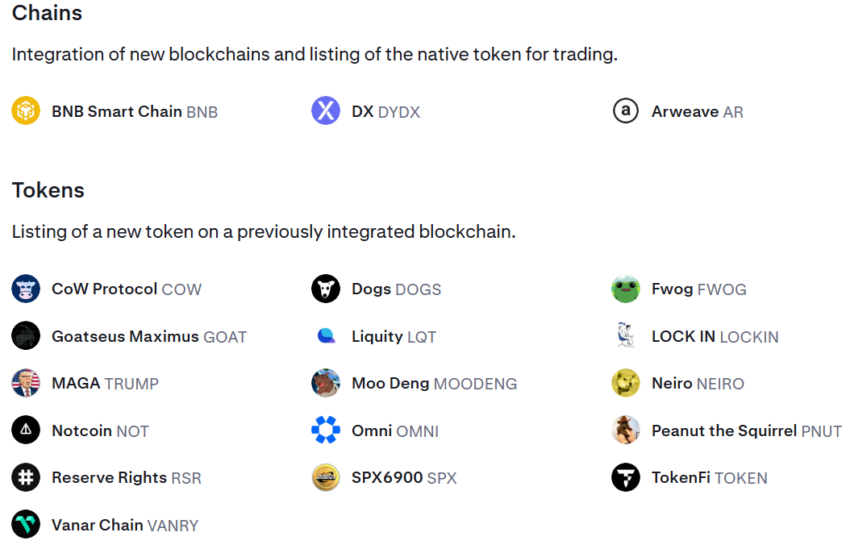
However, the exchange clarified that listing plans are not guaranteed. Funding and trading for these tokens will only begin after an official announcement through Kraken Pro’s account on X. The company warned that Depositing tokens prematurely could result in losses.
Kraken’s planned token expansion comes at a time when the exchange is navigating legal challenges. The US Securities and Exchange Commission (SEC) has accused Kraken of operating an unregistered securities exchange and offering staking services in violation of federal laws. The exchange has been actively defending itself against these allegations.
Despite regulatory hurdles, crypto industry stakeholders are optimistic that the incoming administration will ease restrictions on token listings. Many believe President-elect Trump’s pro-crypto stance could pave the way for a more supportive regulatory environment. Expectations include a clear regulatory framework, the potential establishment of a Bitcoin reserve, and a departure from the SEC’s regulation-by-enforcement approach.
Already, major US exchanges are capitalizing on the growing market optimism to expand their token listings. Coinbase recently listed PEPE and FLOKI, leveraging the ongoing meme coin trend.
Similarly, Robinhood expanded its offerings by adding tokens that the SEC previously described as securities — XRP, Cardano, and Solana. These moves reflect a broader effort by exchanges to capture market momentum and cater to diverse investor interests.
Disclaimer
In adherence to the Trust Project guidelines, BeInCrypto is committed to unbiased, transparent reporting. This news article aims to provide accurate, timely information. However, readers are advised to verify facts independently and consult with a professional before making any decisions based on this content. Please note that our Terms and Conditions, Privacy Policy, and Disclaimers have been updated.
-

 Altcoin23 hours ago
Altcoin23 hours agoRipple CEO Shares Bullish News With XRP Army As Trump Names Treasury Secretary
-

 Altcoin20 hours ago
Altcoin20 hours agoArthur Hayes Shills Another Solana Meme Coin, Price Rallies
-

 Market19 hours ago
Market19 hours agoTrump Taps Pro-Crypto Scott Bessent for Treasury Secretary Role
-

 Altcoin19 hours ago
Altcoin19 hours agoTerra Luna Classic Community Discord On Proposal Amid LUNC Price Rally
-

 Market18 hours ago
Market18 hours agoArtificial Intelligence Coins on the Rise: TFUEL, ZIG, and AKT
-
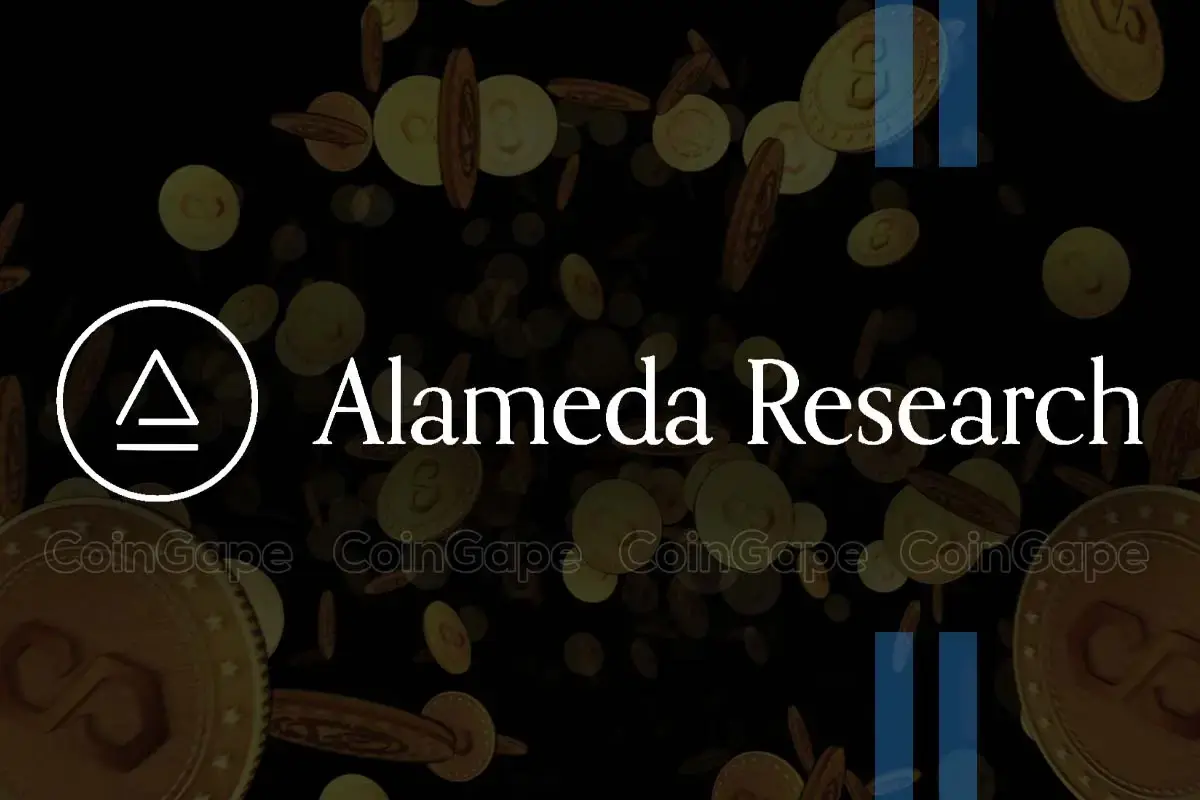
 Altcoin18 hours ago
Altcoin18 hours agoAlameda Research Dumping Polygon (POL) Amid Price Spike, What’s Next?
-

 Altcoin16 hours ago
Altcoin16 hours agoSHIB Lead Shytoshi Kusama Hints At TREAT Token Launch
-

 Market15 hours ago
Market15 hours agoSEC Secures Record $8.2 Billion in 2024 Financial Remedies








